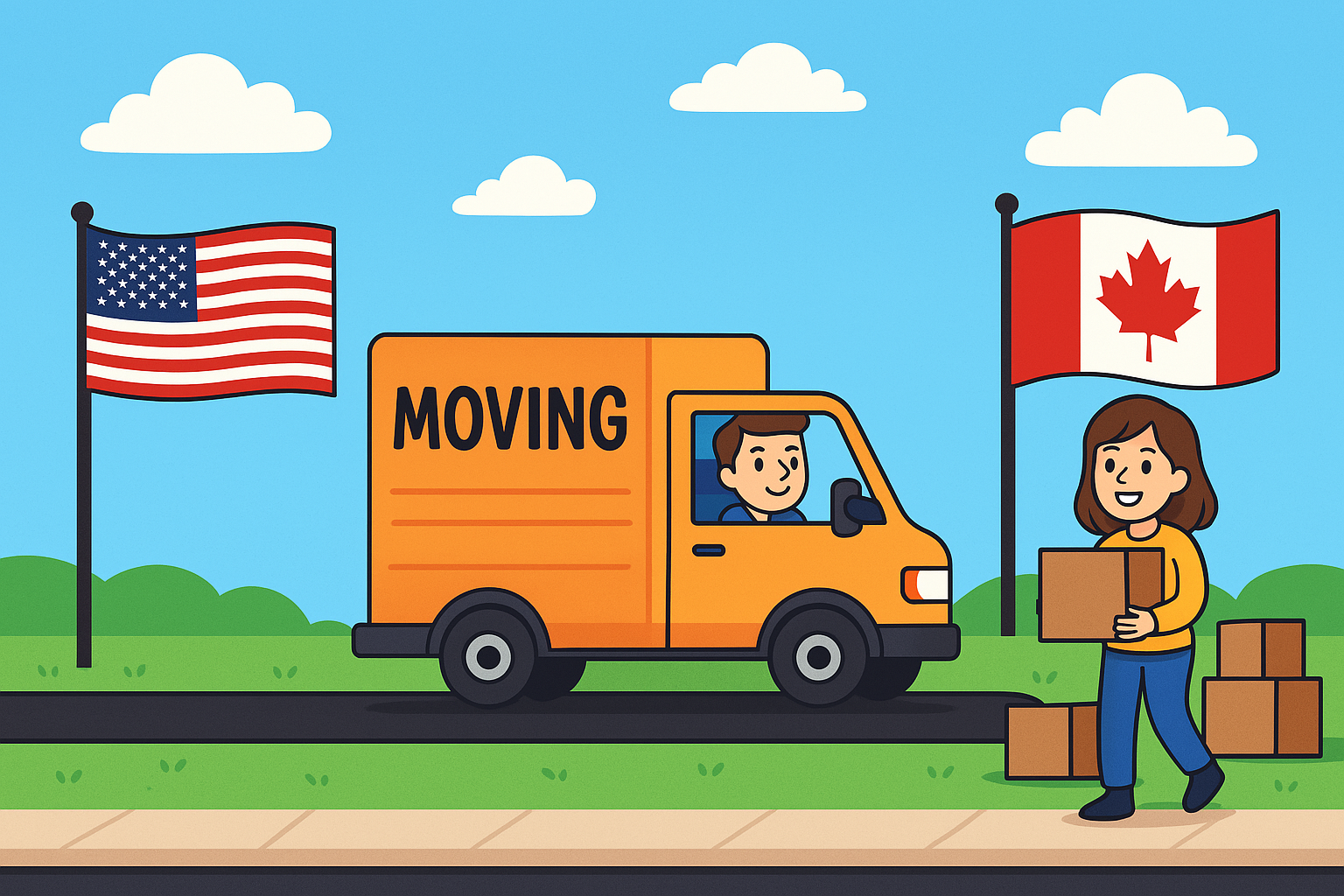Moving to Canada in 2025: The Ultimate Step-by-Step Relocation Guide
“Canada doesn’t have seasons — it has character.” – every immigrant, probably.
When I first thought about moving to Canada, I pictured scenic mountains, friendly neighbors, and a never-ending supply of maple syrup. What I didn’t picture? The mountain of paperwork, the surprisingly specific language test requirements, or how confusing it would be to decide between provinces. If you’re reading this, you’re probably somewhere between “I want out” and “wait, how do I even qualify?”
Let me tell you — it’s 100% doable. But like most big moves, success is all about the prep.
This guide is here to save you months of confusion. Whether you’re thinking about applying through Express Entry, moving for love, or heading north for work or school, I’ve broken down every key part of the process in a way that makes sense. You’ll get real tips, a few “learned the hard way” moments, and a roadmap you can actually follow without getting lost in government jargon.
So grab your notebook (or just a strong coffee), and let’s get you prepped for your Canadian adventure!
Understanding Why People Move to Canada
It’s not just the healthcare or free snow — though, yeah, both of those are pretty great.
I moved to Canada for better opportunities and peace of mind. Back home, life felt like a treadmill — always running, but never really going anywhere. In Canada, there’s this quiet sense of safety. People respect rules. The healthcare system, while not perfect, won’t bankrupt you. And the diversity? It’s real. I’ve made friends from five continents in just one year here.
- Jobs: Skilled workers are in high demand, especially in healthcare, IT, trades, and logistics.
- Education: Canadian schools and universities are world-class and more affordable than those in the U.S. or U.K.
- Family: The Family Sponsorship program makes it possible to reunite with loved ones.
- Lifestyle: Clean air, political stability, walkable cities — it all adds up.
But let’s not sugarcoat it. Winters can be brutal. You’ll need good boots and patience with public transit delays. Still, most immigrants say the trade-offs are worth it. Just make sure you’re coming for the right reasons — not because a YouTube ad said you could get a visa in 3 weeks.
Canadian Immigration Pathways
Let me tell you, figuring out how to move to Canada is where most people get stuck. When I first started researching, I had about 37 tabs open and still couldn’t tell the difference between Express Entry and the PNP. It felt like alphabet soup — CRS, IRCC, LMIA — but once you get past the acronyms, it actually makes sense.
The Main Routes
- Express Entry: A points-based system for skilled workers.
- Provincial Nominee Program (PNP): Provincial-specific invitations for in-demand workers.
- Family Sponsorship: For those with Canadian relatives who can sponsor them.
- Study Permit to PR: A path for international students to transition to permanent residency.
Picking the Right Path
- Your age
- Your English or French ability
- Your job experience
- Whether you already have Canadian education or work experience
I went the Express Entry route, and prepping for the IELTS was way tougher than I expected — especially the speaking part. If English isn’t your first language, give yourself way more time than you think you’ll need.
Preparing Your Application
What You’ll Need
- Valid Passport
- Language Test Results (IELTS or CELPIP)
- Educational Credential Assessment (ECA)
- Proof of Work Experience
- Proof of Funds
- Digital Photo (IRCC requirements)
Setting Up Your Express Entry Profile
Create a profile on the IRCC website and enter your details carefully. CRS scores will determine if you get an invitation.
Tip: Upload clear, properly named PDFs and use IRCC’s document checklist like your life depends on it — because your application kind of does.
Finding a Job Before You Arrive
Having a job lined up is a game-changer — for finances and CRS points.
Best Platforms
- Job Bank Canada
- Indeed.ca
- Workopolis
Resume Tips
- Max 2 pages
- Use action verbs and highlight results
- Don’t include a photo or personal details
Be persistent. Even if you don’t land a job offer, interviews and networking help build confidence.
Housing and Cost of Living in Canada
Sticker shock is real. Expect to pay premium rent in major cities like Toronto or Vancouver.
Typical Monthly Costs
- Rent: $1,500–$2,500
- Groceries: $300–$600
- Transit: $100–$150
- Phone plan: $40–$80
Try to find short-term housing while you look for something long-term. Use sites like Facebook Marketplace, Kijiji, or PadMapper.
Accessing Healthcare in Canada
Canada’s healthcare system is public — but not instant.
- Apply for a health card right after landing
- Some provinces have a 3-month wait
- Private insurance is smart during the wait period
Walk-in clinics, telehealth, and family doctors are your go-to options. Keep your medical records handy.
Schools and Education for Families
- Public education is free
- Enrollment is based on your home address
- Kids usually start Grade 1 at age 6
Universities and colleges are respected globally, and international students have pathways to permanent residency.
Settling In and Adjusting to Canadian Life
To-Do List:
- Apply for your SIN number
- Register for healthcare
- Open a bank account
- Apply for your driver’s license
Join local community groups. Canadians are kind, but it might take effort to build your tribe.
What to Pack (and What to Leave Behind)
- Bring: Important documents, a few sets of clothes, prescription meds
- Leave: Furniture, old electronics, anything heavy or replaceable
Winter gear is best bought locally. Trust me — you’ll need it.
Arriving in Canada: What to Expect at the Airport
- Present your COPR and documents
- Go through immigration screening
- Declare items properly (use your “goods to follow” list)
Be ready for long waits. Bring snacks, water, and your patience.
Conclusion: Making Canada Your New Home
You did it — or you’re seriously on your way. Moving to Canada in 2025 isn’t easy, but it is possible with the right plan. Trust me — I’ve lived it. And I wouldn’t trade it for anything.
Ask questions. Get help when you need it. And don’t forget to breathe.
Got questions about your move? Drop them in the comments — I’d love to help however I can. Welcome to Canada, eh? 🍁











